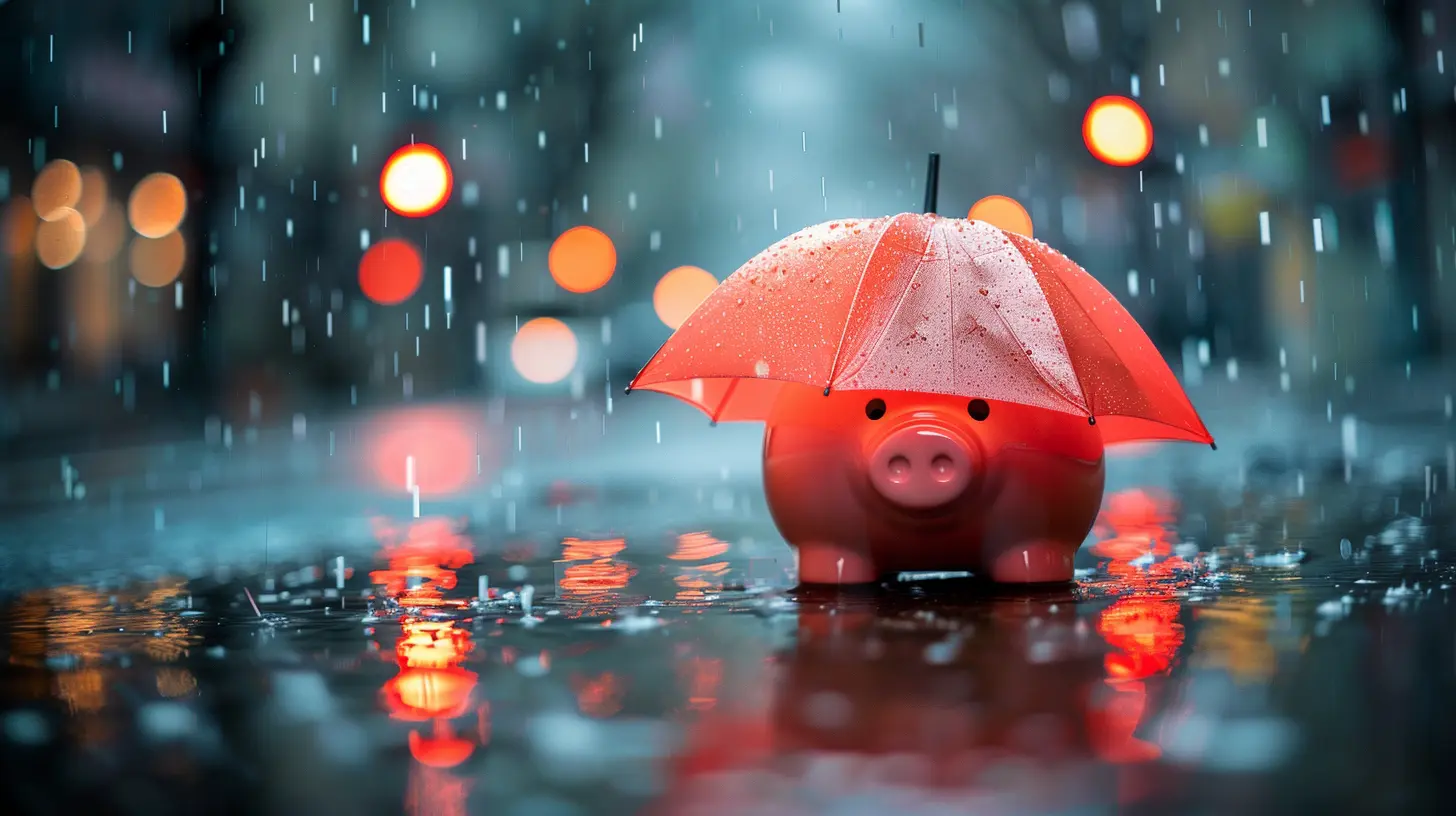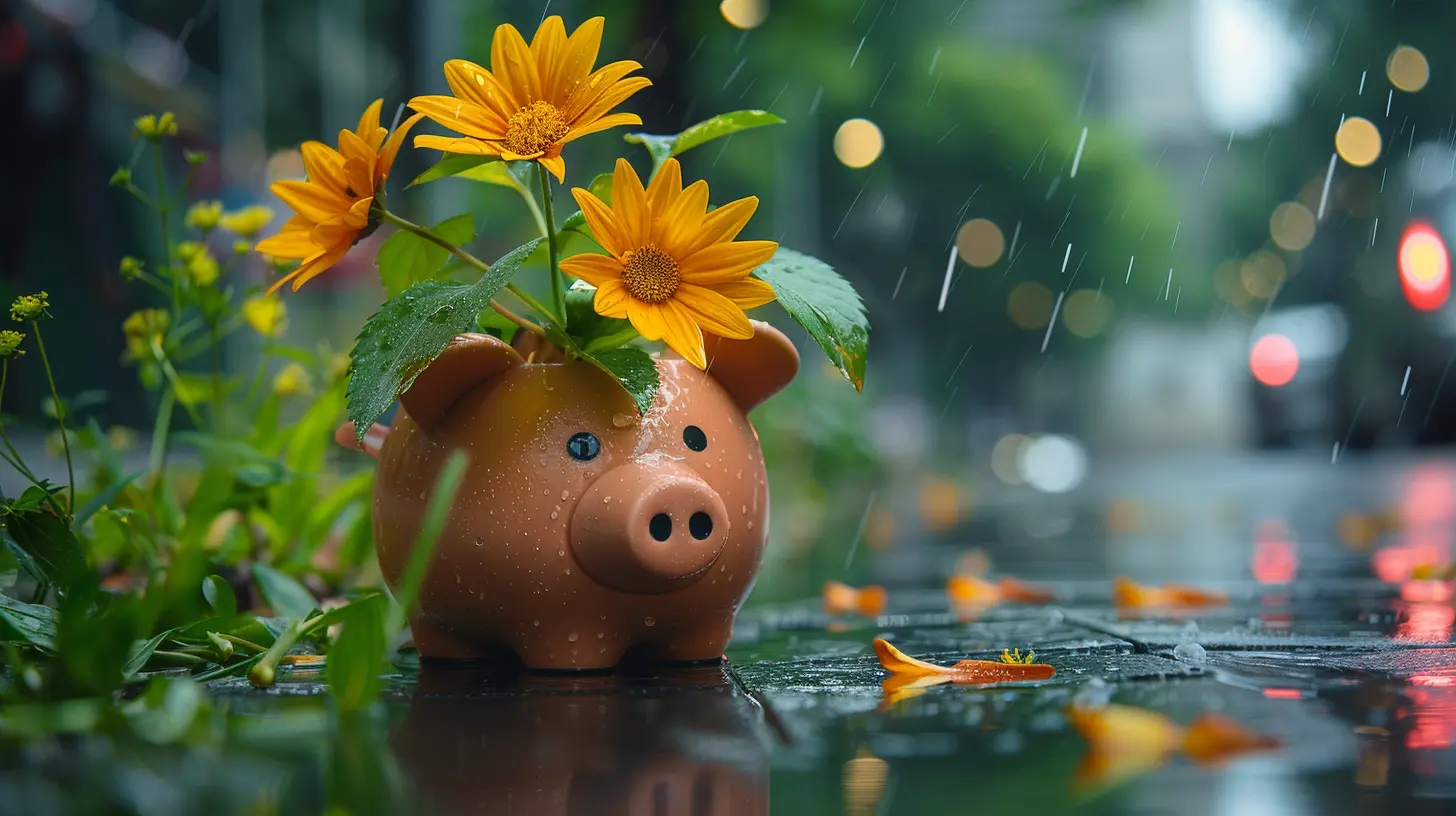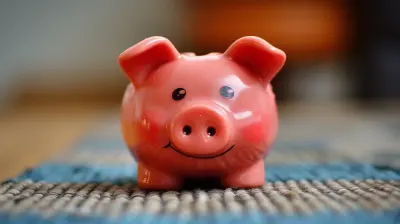Saving for a Rainy Day: Building an Emergency Fund with Frugality
17 July 2025
Let’s face it — life can be unpredictable. One minute you're cruising along, and the next, your car breaks down, your roof starts leaking, or an unexpected medical bill lands in your mailbox like an uninvited guest. That’s exactly why you need an emergency fund. But here’s the kicker: building one doesn’t mean you have to stop living. You can grow one step at a time, and yes — frugality is the key that can unlock that safety net.
In this article, we’ll break down exactly how to build an emergency fund without sacrificing your sanity (or your daily coffee… maybe). Grab a cup, get comfy, and let’s chat money — the smart, frugal kind.
What Is an Emergency Fund, Anyway?
An emergency fund is your financial cushion for the “uh-oh” moments in life. Think of it like a fire extinguisher for your bank account. You hope you’ll never need it, but when you do, it can save you from the flames of financial chaos.It’s not meant for vacations, shopping sprees, or impulse buys. It’s strictly reserved for true emergencies — job loss, unexpected medical expenses, critical car repairs, or urgent home fixes. It’s peace of mind in a savings account.
Why Having an Emergency Fund Matters More Than You Think
If 2020 taught us anything, it’s that stability is fragile. Millions faced job losses and had no backup. Suddenly, putting all your eggs in one income basket didn’t seem like the best idea.Here’s the deal: without an emergency fund, you might be forced to:
- Rely on credit cards (hello, interest rates!)
- Take out high-risk loans
- Borrow from family or friends
- Delay necessary repairs or medical treatments
And none of that feels good, right?
With an emergency fund, you’re not just saving money — you're saving your future self from panic and stress. It gives you options, freedom, and a sense of control when things spin out of control.
How Much Should You Save in Your Emergency Fund?
The standard rule of thumb is 3 to 6 months’ worth of living expenses. But here’s the truth bomb — that amount can look different for everyone.Ask yourself:
- Do you have dependents?
- Is your job stable or seasonal?
- Are you a one-income household?
- Do you have health issues or expensive assets (like a fixer-upper home or an older car)?
For starters, aim for at least $1,000 as a mini emergency fund. That’s enough to handle minor mishaps. Once you’ve got that in place, work your way up to 3 months of expenses, then aim higher if your situation calls for it.
The Magic Ingredient: Frugality
Frugality doesn’t mean being cheap — it means being intentional. It’s about understanding the difference between needs and wants, making your money work smarter, and cutting expenses without cutting joy.You don’t have to live in a cabin off-grid. Frugality is about small, smart choices that snowball into big savings.
Frugal Habits That Help Build Your Emergency Fund Faster
Let’s dive into some real, doable strategies that make a difference.1. Budget Like a Boss
If you don’t tell your money where to go, it’ll leave without saying goodbye. Yep, budgeting is the backbone of any emergency fund strategy.- Track every expense (apps help!)
- Categorize needs vs. wants
- Set spending limits
- Prioritize savings as a “non-negotiable expense”
Think of your budget as your GPS. Without it, you’re just driving blindfolded hoping to land at your destination.
2. Automate Your Savings
You’re more likely to save if you don’t give yourself the chance to spend first. Set up an automatic transfer the moment your paycheck arrives — even if it’s just $20.Out of sight, out of spend.
Create a separate savings account (preferably high-yield) and fence it off mentally as “hands-off” cash.
3. Cut Down on Recurring Costs
Monthly subscriptions have a sneaky way of draining your wallet without you even noticing.- Cancel unused memberships (yes, including that gym you’ve visited twice)
- Switch to a cheaper phone carrier
- Bundle services like internet and streaming
- Re-shop your insurance policies
Trim the fat, and reroute those dollars straight into your emergency fund.
4. Embrace DIY Everything
From home repairs to beauty routines, doing things yourself can save a bundle.- Learn to patch holes, paint walls, or sew small clothing repairs
- Brew your own coffee (hello, $5 savings a day!)
- Cook at home — meal prep is a game changer
You’d be surprised how resourceful you can become when you’re saving for a bigger cause.
5. Declutter & Sell
Got stuff lying around that you never use?- Old electronics
- Clothes that don’t fit
- Furniture collecting dust
- Unused kitchen gadgets
Sell them online or at a yard sale. You’ll declutter your space and earn some quick cash to pad your rainy-day fund.
Mindset Shifts That Make Frugal Living Easier
Saving starts in the mind. If you view frugality as sacrifice, it’ll feel like punishment. But if you see it as empowerment, you’ll fall in love with the process.Delay Gratification
No, you don’t need the latest gadget or fashion trend today. Waiting doesn’t just build funds — it builds discipline.Focus on Long-Term Wins
That $50 dinner out might bring momentary joy, but a well-stocked emergency fund brings peace of mind, security, and flexibility — every single day.Celebrate Small Wins
Saved $10 by cooking at home? That’s a win. Transferred $25 to your emergency account? Another win.Small victories build momentum. Keep track and cheer yourself on.
Where Should You Keep Your Emergency Fund?
Easy question, but it matters. Your emergency savings should be:- Separate from your regular spending account (less temptation)
- Liquid, meaning accessible within a day or two
- Earning interest, if possible
Options include:
- High-yield savings accounts (online banks usually offer the best rates)
- Money market accounts
- Credit union savings accounts
Avoid investing it in stocks or long-term CDs. The goal is accessibility, not massive returns.
What to Avoid When Building an Emergency Fund
Let’s avoid some common traps that derail people’s savings progress.Don’t “Borrow” from Your Fund
This isn’t your “new shoes” account. Avoid the temptation to dip into it for non-emergencies.Don’t Wait to Start
You don’t need a big income to start saving. Start with $5 or $10 a week. The habit matters more than the amount.Don’t Keep It in Cash at Home
Stuffing it in a jar might feel secure, but you’re losing out on interest — and putting it at risk of loss or theft.How to Keep the Momentum Going
It’s one thing to start. It’s another to stay consistent. Here’s how to keep pushing forward.Revisit Your Budget Monthly
Income changes. Expenses change. Your budget should too. Review and tweak it monthly to keep your savings on track.Use Windfalls Wisely
Got a tax refund? Work bonus? Stimulus check? Don’t blow it — save it.Set Milestone Goals
Make it fun. Set mini goals like:- $100 emergency fund
- 1 month of expenses covered
- Halfway to your full fund
Celebrate each milestone. Maybe not with champagne… but something frugal and fun!
When Should You Use Your Emergency Fund?
This one’s tricky. Ask yourself:- Is it unexpected?
- Is it necessary?
- Will it threaten your safety, health, or essential quality of life if you ignore it?
If the answer is "yes" to all, go ahead and use the fund. That’s what it’s there for. Don’t beat yourself up — just start rebuilding right after.
The Ripple Effect of a Solid Emergency Fund
Want to know the best part of all this saving? It doesn’t just protect you from emergencies — it changes your whole financial outlook.- You sleep better at night
- You avoid debt traps
- You have confidence to take risks (like starting that side hustle or switching careers)
- You make better financial decisions because you’re not acting out of fear
It’s like giving your future self a big warm hug.
Final Thoughts: Make Your Future Self Proud
Building an emergency fund isn’t about fear — it’s about freedom. It says, “I’ve got this,” even when life throws curveballs. With a pinch of frugality, a splash of discipline, and a dash of patience, you can build your fund and face the future head-on.So open that savings account, skip that impulse buy, and start small today. Remember, every drop contributes to the rainy-day bucket — and one day, you'll be really glad it's full.
all images in this post were generated using AI tools
Category:
Frugal LivingAuthor:

Uther Graham
Discussion
rate this article
1 comments
Sylvia McClain
Every small saving today secures a brighter tomorrow!
August 3, 2025 at 4:58 AM

Uther Graham
Absolutely! Small savings can lead to significant security and peace of mind in the future.


